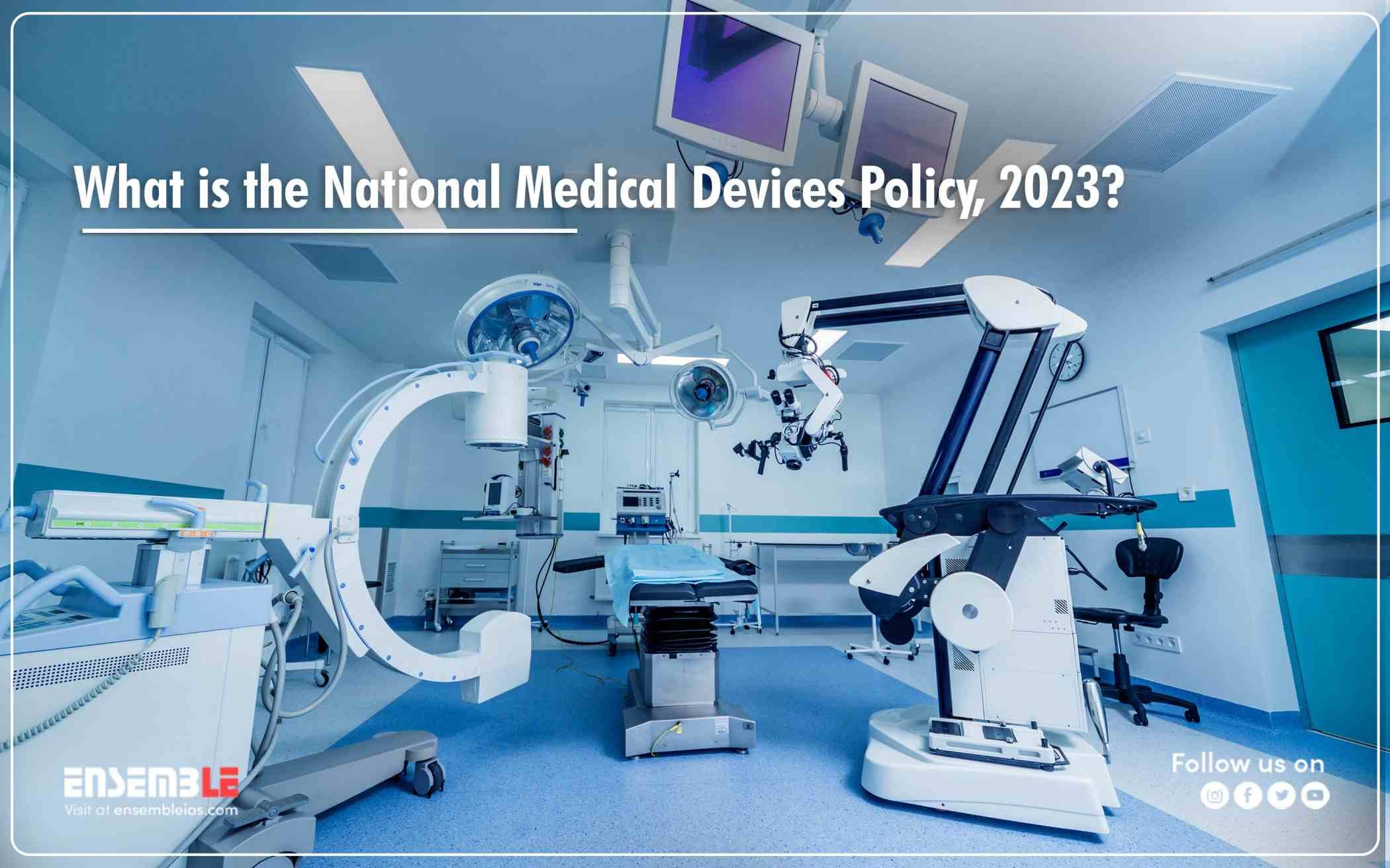Why is this in the news?
According to estimates, most of the high-end medical devices currently supplied in India are imported, with Indian companies and manufacturers focusing their offerings on low-priced, low-tech items like consumables and disposables.
With the new strategy, the Centre hopes to make India one of the top five global manufacturing centers and cut its reliance on imports to about 30% in the coming years. The policy focuses on high-end product manufacture for export that is also cheap for Indian hospitals and laboratories while drastically lowering reliance on imports.
What was the outcome of the National Medical Devices Policy?
On April 26 the National Medical Devices Policy 2023 was adopted by the Union Cabinet. The goal of the strategy is to encourage the sector’s orderly expansion to advance the public health goals of accessibility, affordability, quality, and innovation. By 2030, it is anticipated to contribute to the local medical devices market growing from $11 billion to $50 billion while obtaining a 10-12% worldwide market share. To enable the industry to become “competitive, self-reliant, resilient, and innovative” to meet domestic and international needs, the necessary guidance and support are to be given.
What is the basis for changing the policy?
The Drugs and Cosmetics Act of 1940 primarily governs India’s medical device industry. Additionally, the sector has been requesting a specialized medical device policy. The Centre announced revisions to the Medical Devices Rules, 2017, in February 2020 to regulate medical devices in accordance with the 1940 Medications and Cosmetics Act’s guidelines for medications. This was required in response to information regarding defective hip implants sold by Johnson & Johnson, which exposed the lack of regulatory teeth for medical products.
What is the estimated size of the medical devices market?
In the medical device market, India now holds a share of 1.5% of the global market or $11 billion (or 90,000 crores) in 2020.
The policy’s long-term objective is to capture 10–12% of the worldwide market share during the next 25 years, with the short-term objective being to reach $50 billion in annual revenue by 2030. The US has a 40 percent market share, followed by Europe and Japan at 25 and 15 percent, respectively, on the global market.
How does the rule of National Medical Devices Policy operate?
The National Medical Devices Policy will encourage R&D here, create Centers of Excellence at academic and research institutions, help start-ups, promote innovation hubs, and build plug-and-play infrastructures.
It will support VC funding, public-private partnerships, and private investments in the market.
- – The Ministry of Skill Development and Entrepreneurship will assist experts in the medical device industry in upgrading their skills. They will also support specialized multidisciplinary courses.
- – Maintain partnerships with international educational institutes and industry organizations to create med-tech.
- – Brand showcasing and understanding of the product through a dedicated export promotion council for the sectors with greater market scope.
- – Incite studies and projects for comprehending the best global manufacturing methods and embrace globally prosperous models in the nation.
- – Facilitate more media to co-join various stakeholders.
Summary at Glance:
- – With the new strategy, the Centre hopes to make India one of the top five global manufacturing centers and cut its reliance on imports to about 30% in the coming years.
- – On April 26 the National Medical Devices Policy, 2023 was adopted by the Union Cabinet.
- – The Drugs and Cosmetics Act of 1940 primarily governs India’s medical device industry. Additionally, the sector has been requesting a specialized medical device policy.
- – The policy’s long-term objective is to capture 10–12% of the worldwide market share during the next 25 years, with the short-term objective being to reach $50 billion in annual revenue by 2030.




